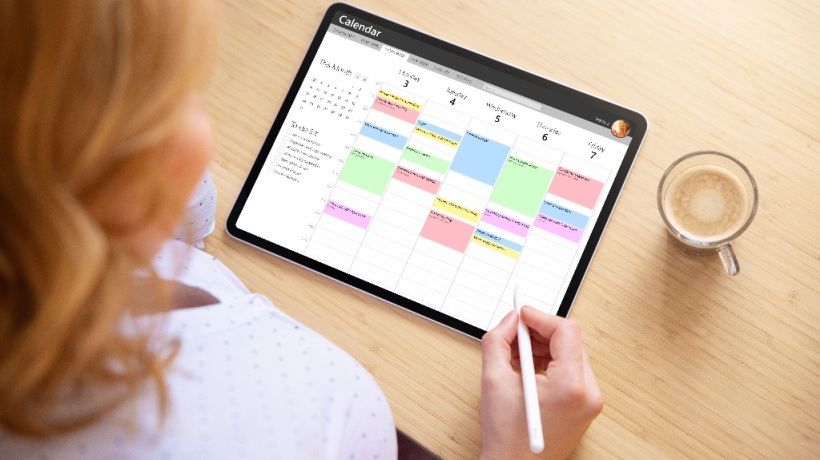A Lesson In Delegating And Training
The meeting room was clean and tidy; training manuals, bottled water, notebooks, and pens were all neatly lined up at each place setting. At the back of the room were tall glasses, ice cubes, cold soda, and fresh snacks for each of my trainees that afternoon. On the table beside me, toward the front of the room, was a large stack of plain white paper next to my laptop and projector. The day before, we had just launched our new eLearning series. It was not your average course library. From stunning graphics and informative charts to videos and technical writing, we had just given them the latest facts on business acumen.
Cindy and Karen soon walked in. "We're looking forward to your training," they shouted from the back of the room.
"And I'm happy to be with you for a second day," I called out.
Within minutes the room was full. When the clock said two minutes before one, everyone was there except Robert. It was time to start our second day of leadership development at the top of the hour. I passed out sheets of clean white paper to each of the attendees. "Fold a paper airplane," I instructed.
"Oh, no! Not a team-building exercise," said Robert as he walked in late.
"Not at all. I just want to find out if you know how to delegate," I fired back. He was obviously confused by my answer. It seemed that his main goal was to gain admiration from others. He often exaggerated his skills and made it sound as though he could handle anything the boss handed him.
"I can delegate all day long," he boasted. "What's a paper airplane got to do with it?" Robert said under his breath.
The thirty or so people in the room started making airplanes as I gave the assignment without any directions.
"I can't," said Jim. "I've never made one," he lamented.
"Just do the best you can," I said firmly. "I want every one of you to fold a paper airplane whether you've done it or not." I then went on for three or four minutes talking about my childhood and the fact that my dad made the coolest paper airplanes I'd ever seen. Within ten minutes, there were many different types of folded papers from the thirty people in attendance that day. Only a few resembled a paper airplane that might take flight.
I quickly divided the learners into groups of five and asked them each to launch their airplane toward the meeting room wall. Not one of the planes looked like any of the others. And, only about six of them took flight.
"What was the point of that?" asked Cindy.
"You didn't even explain how to make one," added Karen.
"You're exactly right!" I said. "Unfortunately, that's how many managers and supervisors delegate to their employees," I continued. And to make matters worse, that is often how we train people too. Telling someone to do something is not training them!
"There are many useful ways to delegate and train," I said. "But to begin with, I'm going to share just one of them for now." I then went on to say that for these leaders to be successful, they needed to learn and follow these 4 steps of delegating and training:
- Explain
- Demonstrate
- Practice
- Evaluate
"What might have happened had I followed these steps?" I asked, trying to read the body language of the group.
"We would have made better airplanes," Karen insisted, as she raised her eyebrows. She lamented that she learns best from reading detailed descriptions.
"I learn best from demonstrations," said Jim, as he described his department's on-the-job training program.
"I think his follow-up eLearning library is awesome," said Juan. "I especially like the videos, technical writing, diagrams, and learning community comments."
"Just tell me what you want and I can do anything!" boasted Robert, while the others rolled their eyes in disagreement.
The sophisticated group of managers understood. They obviously didn't enjoy being told to do something without the know-how to do it. "Let's try this again," I said, with a smile. "But this time we'll follow the steps: explain, demonstrate, practice, and evaluate." So in great detail, I told them that we would each fold the same variety of paper airplanes. It was called a classic dart. It was easy to do and flew through the air fairly effectively. I even gave them written, step-by-step instructions with helpful graphical elements attached.

At the end of the demonstration, we lined up in similar groups, this time having about an 85% success rate. They could fly and they mostly looked the same. Those in the room whose planes did not work got additional evaluation and training from their peers in the class. Relating this simple experiment in class to the real challenges we faced in business inspired us to then solve training and delegating issues that our group had. We came up with several successful plans that were later implemented and had a lasting impact on culture and sales.
Not Everyone Can Delegate Effectively
About six months later, Robert, the overconfident manager, was charged with the task of helping his new employee, Amy Lynn, with a huge recruiting plan for his division. She had a monumental task ahead. No matter how many times Robert told her to recruit, hire, and onboard the right talent, she couldn't seem to make it happen. That's because Robert couldn't delegate and train her on the task. Unfortunately, he did not know how to do it.
Leadership Skills And Development
Good employees crave good leadership. Good leaders know how to delegate and train with the specifics needed to make their teams successful. Perhaps all of us have witnessed poor delegation and training from a leader on a team. It's literally impossible for a boss to know everything (at least in most companies). But if you're in a leadership position, then your employees look to you for guidance and strength. As a leader, part of your job is to get the right information and training to your employees from the subject matter experts they must rely on. Then the leader must delegate effectively through very specific means.
When management skills are high, and when they delegate and train well, employees will often try to emulate a leader's instructions. Leadership becomes more transparent, skills and know-how rise to the surface, employee morale goes up, and employees perform. People learn in a variety of ways; live training paired with great eLearning, games, and demonstrations encompass a larger group of learning styles.










